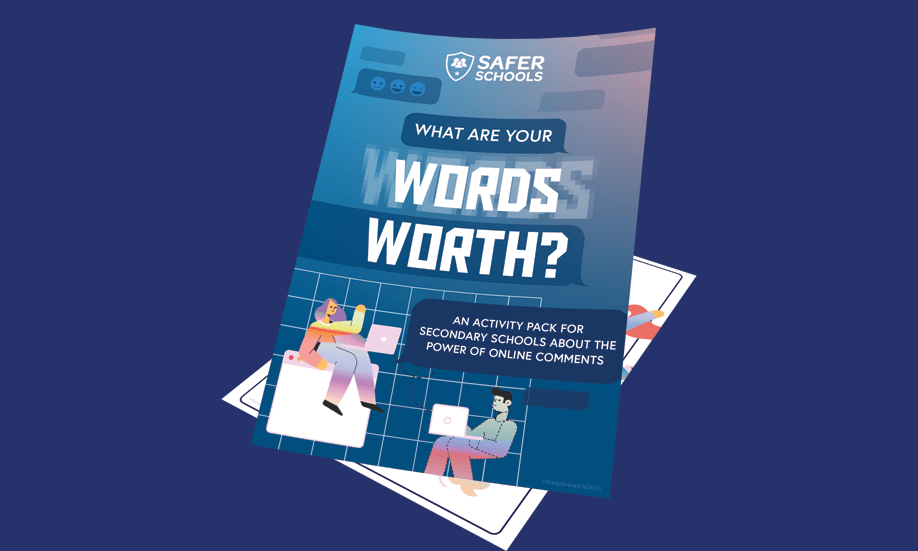Last Updated on 31st March 2023
Every new year sees new trends, risks, and threats to online safety emerge, especially for children and young people. This can seem overwhelming (and sometimes even frightening) if you feel like you’ve just got your head around the last new ‘thing’.
To help you stay ahead of the curve, our online safety experts have combined our analysis with concerns from parents, carers, teachers, and safeguarding professionals. Keep reading to learn more about the biggest online safety trends, risks, and threats for children and young people in 2022.

Continuing Trends & Threats
We’re not leaving everything behind in 2021. Some online behaviours are projected to be even bigger this year.
Peer-on-peer abuse – Also known as a form of ‘cyberbullying’, the harmful online behaviours some children experience, may take on new and unexpected forms, with new platforms, features, and technology.
Misinformation – If 2021 saw a boost in conspiracies and “fake news”, then 2022 is set for a bang. 57% of young people get their news from social media platforms. With more platforms taking on the ‘TikTok style’ short form video, visual misinformation is easier to consume with fewer fact checks and sources.
Scams – Unfortunately, scammers seem to move with every new online trend as they find a way to manipulate popular topics or platforms in their favour. Last year saw an increase in financial scams on chat platforms like WhatsApp, which is expected to continue this year.
Sexual Exploitation – Since the start of the global pandemic, there has been an exponential rise in child sexual exploitation and abuse online. Last year the IWF warned that nearly half (44%) of the imagery it acted on was ‘self-generated’, which was a 77% increase from the statistics in 2019.
Influencers – With social media platforms accounting for 43.5% of where internet users do brand research many companies are turning to iInfluencers to help them market products, especially to younger consumers. This year you will see more ‘paid advertisements’ or ‘in partnership with’ pop ups, featuring humorous or ‘honest’ brand reviews from influencers.

Emerging Trends & Threats
While ‘new and trending’ is a popular online tag, we believe these growing trends popularised in 2021, are now well on their way to becoming ‘mainstream’ in 2022.
NFTs – NFT stands for ‘non-fungible token’ which are unique digital assets that hold value. They come in the form of artwork, videos, photos, and audio files that are bought with cryptocurrencies like bitcoin. With many celebrities and influencers creating their own NFTs and selling them, you’ll see NFTs become more widespread this year.
Deepfakes – A deepfake is an image, video, sound, or GIF which captures someone’s face, body, or voice and puts it onto something else, like the Dancing Elf videos or “face swap” apps like Reface. As users without sophisticated technological skills can easily access, create, and distribute deepfakes, you’re likely to see this more widely used across all media outlets.
Virtual Reality (VR) – VR describes a technologically simulated, immersive experience. This is making big strides into the consumer market with a host of new gaming technology, Facebook creator Mark Zuckerburg promising a ‘Metaverse’, and the increasing number of art and culture installations that are turning into tourist attractions in major cities (such as the Van Gogh experience, where visitors can ‘walk through’ some of his most famous paintings).
AI Friends & Companions – Similar to VR, Artificial Intelligence (AI) is becoming more commonplace with every passing day. Most homes utilise either Alexa, Siri, or Google Assistant to do a myriad of household tasks. However, there is a rising trend of customisable AI friends meeting the companionship desires many isolated people have been lacking in for two years. Expect to see more and more people use apps like Replika, even as we begin to re-engage with normal socialising.
Esports – Another trend sure to see a boost in popularity with the advancement of VR technology is Esports. To put it simply, Esports (electronic sports) describes competitive video gaming. Both amateur and professional Esports players compete against each other in single-player or multi-player games, sometimes resulting in massive events attended by fans online and/or in-person. This may seem surreal, but videogames are still the leading sector in the UK entertainment industry, even with sales down in 2021.

Evolving Risks to Children and Young People Online
While there are always risks to children and young people spending time online, such as grooming and screen time overuse, some risks have begun to change according to the threats presented by rising trends.
Disconnection – The rise of immersive VR and AI realities may see vulnerable young people begin to distance themselves from the real world. Ignoring meaningful connection with friends and family, fixating on their phones or consoles, and neglecting responsibilities like schoolwork or extracurriculars are all very real risks that could negatively impact a young person’s development.
Gambling behaviours – There has been a rise in types of cryptocurrencies being offered as rewards for gaming, alongside NFTs and other ‘valuable’ online assets. Young people may be driven by a desire to ‘get in on the ground floor’ and could find themselves embroiled in gambling-like behaviours to obtain this valuable currency they may not be able to buy outright. This is a dangerous risk, as it could lead to addiction and financial difficulties in the future.
Media mistrust and cynicism – Changing attitudes towards news outlets, scientific research, and personal preferences will continue to impact how young people are making and forming their opinions. According to Ofcom, 52% of young people say they are unable to tell if a news story they see on social platforms is true. Furthermore, while 68% of young people trust their families to tell them about most world news, only 19% of them actively engage in these conversations.
Online Radicalisation – Spending more time online during the pandemic has created an environment that puts vulnerable young people at risk for radicalisation. Radical groups will continue to exploit feelings of loneliness and isolation to recruit younger members to their cause. Recently, a 14-year-old schoolboy was convicted of terror charges in the UK, and several other young people across the UK have been investigated for connections to terror attacks and incel organisations.
Reliance on technology – After two years of schooling online, socialising online, shopping online, and everything in between, it’s no wonder that most people are ‘nomophobics’ – the term for someone afraid to not have their phone with them. But it’s not just smartphones that have created our technological world. Most students spend the majority of the day on tablets, watching television, or asking Alexa for homework help. This reliance has a proven link to sleep disturbances and depressive behaviour.

Top Tips to Help You Have a Safer Online 2022
We know these trends, threats, and risks may seem like a lot. Remember to deal with every situation as it comes. Use our guidance below to help you have a safer 2022 every day.
Engage young people in a conversation about keeping safe online and who they would talk to if something made them feel uncomfortable. Check out our Trusted Adult resource to learn more.
Agree on Screen Time boundaries within your household. This will help any children in your care have a healthier relationship with their screens and encourage them to take breaks. If a young person in your care expresses concern or distress over screen time limitations, ask them to explain why it’s important for them to having more time. Remind them of the importance of balancing online time with offline time.
It’s important to teach young people how to identify scams. Remember – if something seems too good to be true, it typically is.
Use our Home Learning Hub to access expert resources that will help you help those in your care as they navigate the online world.
Join our Online Safety Hub Newsletter Network
Members of our network receive weekly updates on the trends, risks and threats to children and young people online.
Pause, Think and Plan
Guidance on how to talk to the children in your care about online risks.

What Are Your Words Worth
This activity pack is designed to prompt young people to think about the words they use online. The activities included will help them to reflect about comments they make on social media or gaming platforms and how those words may impact others. There is also a challenge included to make more #PostivePosts!












